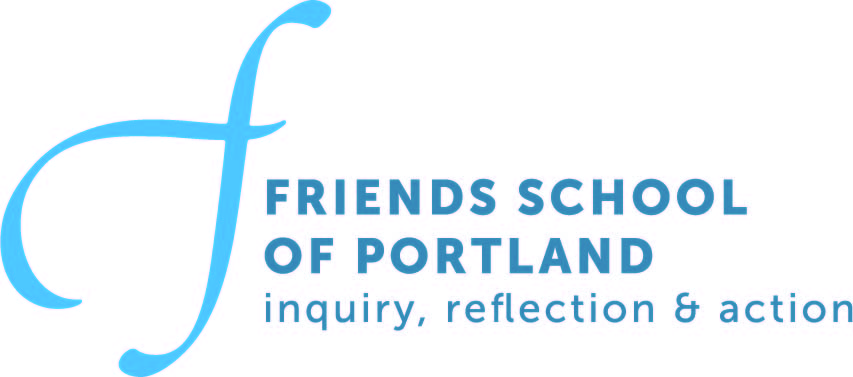Pictured above: Third and fourth-grade students in the spring of 2022, writing letters in support of LD 1626: An Act Implementing the Recommendations of the Task Force on Changes to the Maine Indian Claims Settlement Implementing Act. With the help of some folks at Sunlight Media Collective and the First Light organization, students learned as much as they could about the bill. They asked the question: why would we or why wouldn't we want to get involved? Next, they defined the terms sovereignty, ally, bill, hearing, sustenance, and stewardship. They looked into their systems of values and identity and wrote letters that reflected their beliefs and understandings about big ideas.
We began our work to re-envision our approach to Wabanaki Studies about ten years ago. Among other goals, we wanted to ensure that our approach to Wabanaki studies was as contemporary as it was historical, to combat the erasure of indigenous communities today and to underscore that indigenous people, including Wabanaki people, are integral members of our communities and our world. It also became clear that, rather than adding or revising discrete units and leaving the rest of the curriculum untouched, we wanted to use the work to make systemic changes to the curriculum– to incorporate Wabanaki voices, and perspectives (and, more broadly, indigenous voices, and perspectives) across the curriculum and the grades so that it became a lens we use more generally as we plan learning activities.
Though we had some idea of the direction we wanted to move, we weren’t sure exactly how to do it, and there have been false starts and frustrations along the way. A number of teachers, passionate about this work, spent time educating themselves– attending workshops and conferences, reading books, questioning their own biases, and engaging in discussions with colleagues. Inspired by this learning, teachers began to re-envision the larger themes in their curricula.
Teachers began by re-imagining and revising their essential questions– year-long teaching and learning-focused queries that provoke open thinking and discussion, invite reflection, and drive the social studies, science, and humanities curricula. Teachers considered how these questions might support their curriculum revisions. Third and fourth-grade teachers, for example, inspired by Chimamanda Ngozi Adichie’s Ted talk “The Danger of a Single Story” introduced “What is the power of a story?” as one of their essential questions. In fifth and sixth grade, we introduced the question “Who is an American?” to drive the U.S. civics and history year. And in seventh and eighth grade the question “What is the relationship between identity and power?” set the foundation for studies of identity, race and ethnicity, genetics and scientific classification, and colonialism.
Beginning with rewriting essential questions has helped teachers to revise and create new units to include an indigenous lens. The third and fourth-grade national parks unit, long a tradition in that grade band, now emphasizes an understanding of the difference between land ownership and relationship to land as well as how issues of indigenous lands and indigenous sovereignty are being addressed by the national parks. The kindergarten name study, an annual entre into Kindergarteners’ essential yearlong letter-sound work, kicks off with Sherman Alexie’s book Thunderboy Jr. as a mentor text to introduce to students different naming traditions– including indigenous naming traditions.
The freedom that FSP teachers have to shape (and reshape) their curricula, together with teachers’ own ongoing professional learning, has also allowed teachers to bring into the classroom various opportunities as they have arisen, whether it be learning about and sending testimony in support of legislation focused on Wabanaki rights and sovereignty, building a study around the Portland Ovations’ Wabanaki Stories, or participating in a workshop given by Toward Right Relationship with Native Peoples and using students’ post-questions to drive classroom studies. Below is a partial list of additional ways that this lens has helped to shape learning activities over the last few years:
Kindergarten
Special People Project—inspired by photographer Matika Wilbur, a citizen of the Tulalip Tribes.
Storytelling Unit with John Bear Mitchell, Penobscot Nation citizen, as the person of inspiration, including a trip to see Wabanaki Stories at Merrill Auditorium
Grades 3-4
A Maine geography study centering an in-depth study of Wabanaki place names
Grades 5-6:
A unit that included a study of the Maine Truth and Reconciliation Commission
Grades 7-8:
A unit that centered around participating in research to support the project Ash Protection Collaboration Across Wabanakik, a joint program of UMaine, the Wabanaki nations, and state and federal forestry agencies.
This work is not finished, but we are on the journey. As part of this ongoing work to learn more and do better, teachers pose new questions regularly that begin the inquiry-reflection-action cycle anew for us. Here are some recent ones:
As a white teacher, how can I bring indigenous voices into my classroom in a way that is respectful and non-appropriative?
How can we ensure that we are celebrating indigenous contributions and indigenous excellence and not just indigenous trauma?
As a science teacher, how can I introduce indigenous, and in particular, Wabanaki ways of knowing alongside the scientific process?
Written by Director of Studies, Nell Sears.

